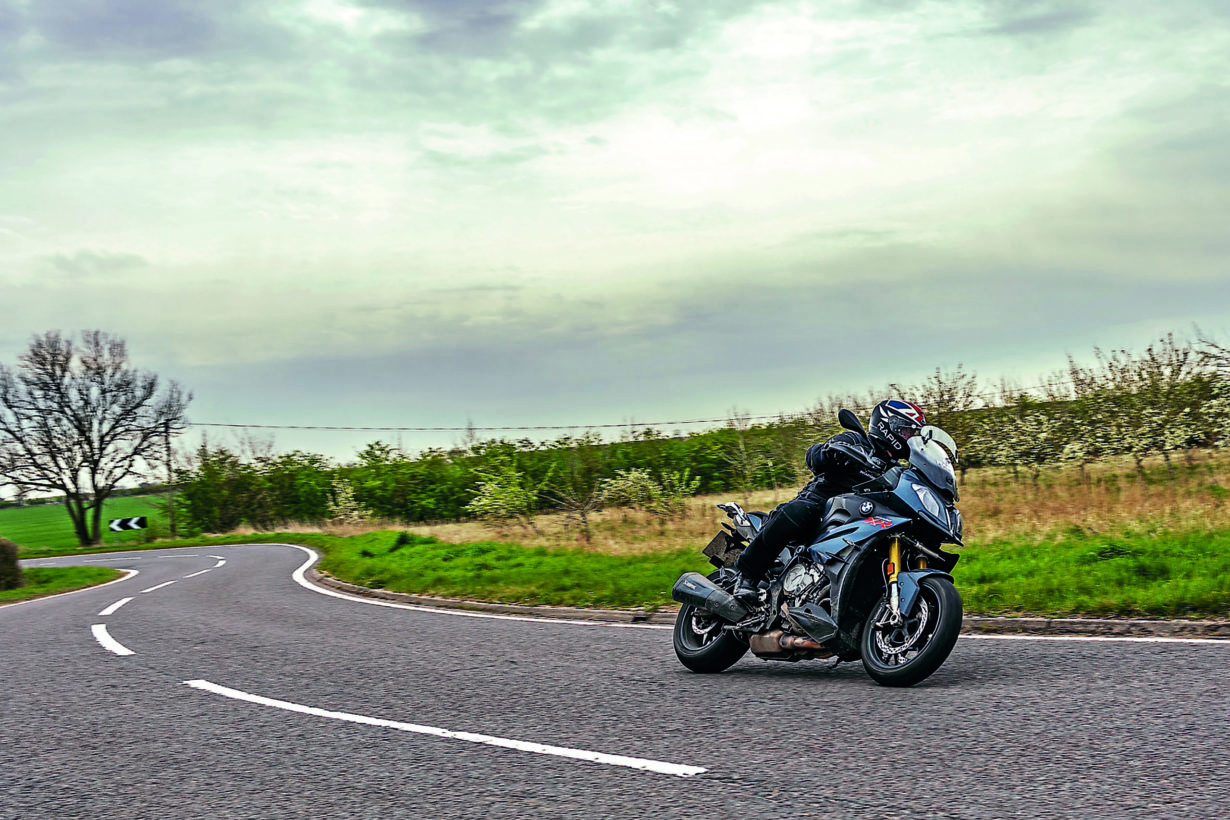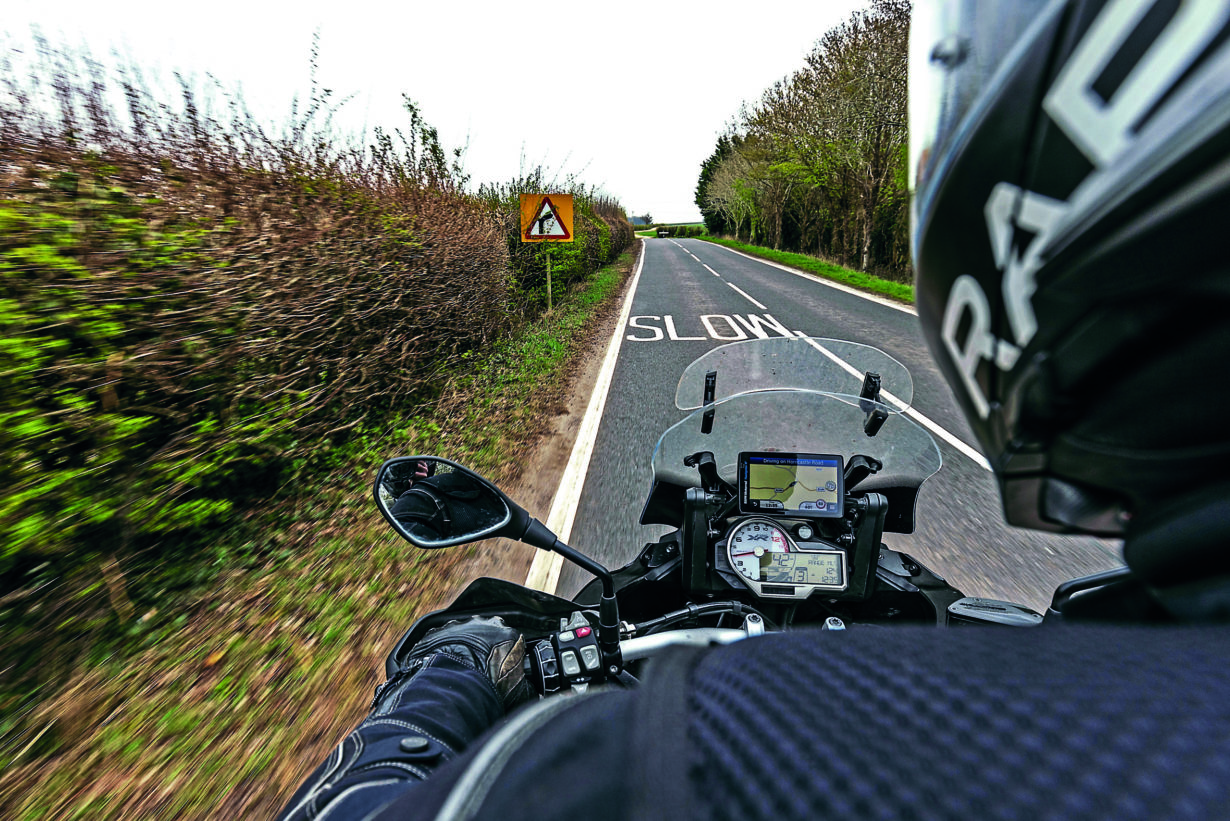Want to know the key to fast, safe riding?

The bad news is that it’s not quite as simple as picking up a copy of the Highway Code and memorising it. The good news is that it’s totally achievable when you know how, and you are willing to put the work in. Here’s what’s involved…
MB: If we want to get better at riding, what’s the best way to develop our skills?
Ryan: The single most transformational thing a rider can do for their riding, is to evolve their ability to see and interpret detail at speed. Great riders can observe and interpret vastly more detail, much earlier than novices, and at far higher speeds. This allows them much more time and space to react to the road ahead, and effortlessly handle whatever comes their way.
Learning to read the road involves the development of observation and interpretation skills. We need to be able to identify large amounts of detail, and here’s the crunch: we need to make sense of what it means to us.
MB: So, we need to improve our observation. How do we do that?
Ryan: The process of observing and gathering information should be early, detailed and continuous.
Early, because the sooner a rider sees the information, the more time they have to process the implications and develop a plan to react.
Detailed, as riders need to learn to observe all of the detail ahead and behind them in order to decide if it might affect their riding plan.
And continuous, which means that riders need to develop ‘rolling road vision’, continuously scanning and updating their observation rather than fixating on any particular hazard. But, of course, highly developed observation skills are not enough.
MB: Oh, so what else do you need?
Ryan: Riders who want to achieve their potential must learn to make sense of what they see and accurately assess the implications for their riding. They must apply the ‘so what’ test.
We see an adverse camber. So what? It could affect my traction adversely and throw me off my line.
We see a car in the rear-view mirror. So, what does it mean to me? The car is gaining quickly, and may affect my decision to use my brakes.
We see an empty side road. So, what does it mean to me? A car might arrive as I approach and am past the point of no return.

MB: How do we develop our ability to ‘read the road’?
Ryan: Like any other skill, our ability to ‘read the road’ will develop in proportion to the amount of focused practice we dedicate to it. If we don’t want this to be a limiting factor in our riding, we need to go way beyond the level of skill that will result from experience alone.
Crucially, the skill levels we need to develop are proportional to how fast we intend to ride. The key to developing these skills is to start slow and go for detail. Focus on how early you are seeing new information, and how much detail you are gathering, and remember this is a continuous process (rolling road vision). The more information you gather, and the sooner you gather it, the more time you have to react.
Once you are making progress with the amount of detail, focus on interpreting what you see. Add the ‘so what’ test. Short bursts of practice on every ride, perhaps adding a commentary, will very quickly develop this skill. Start off at slower speeds until you can gather and interpret every piece of available information, then build up your speed. The faster you go, the more skill it requires. And it is this process of constant evolution that causes our brains to adapt to the new challenge. You can only ride as fast as you can see, so investing in this skill will not only make you safer, it will also make you faster.
MB: What about making a ride plan?
Ryan: For a rider who has developed a precise and complete understanding of the road, planning is a very intuitive skill. It is quite natural for us to avoid danger in any way we can. The problem most riders have isn’t with planning, it’s with failing to recognise the danger in the first place or recognising it too late.
Once a potential danger has been recognised, the rider has to decide what to do about it. This is the planning stage, and it involves deciding where to position the bike relative to the danger; what speed to travel as we negotiate the danger; and what gear we need to select based on how responsive we want the engine to be while we navigate the situation. Finally, we also need to consider what, if any, signal we must provide for other road users, and when we should provide it.
MB: Talk us through the elements of planning. What’s involved in choosing your position?
Ryan: A rider positions a bike to optimise safety, stability and view.
You can improve your safety, for instance, by creating space between yourself and potential danger.
Stability could be optimised by something as simple as selecting a dry section of road rather than a wet line.
View is always important, but especially good to remember when positioning for bends.
Reading the road effectively allows the rider to identify all of the risks early and make a simple decision about where and when to position the bike to create the most space between it and the hazards they have identified taking into account all the other factors.
MB: And how do you choose your speed?
Ryan: Taking into account how close the bike will come to the recognised danger or dangers, the rider has to adjust speed to ensure that in the worst-case scenario where the risk played out, they would be able to avoid conflict by either stopping, changing speed or altering course
MB: What about the gear choice?
Ryan: The rider will select a gear that provides the desired level of responsiveness and control to navigate the danger and leave safely and efficiently, so this depends on the individual circumstances.
MB: Is there an optimal approach that you can apply to most situations?
Ryan: In the real world, we are often juggling position, speed and gear, relative to multiple, simultaneous hazards, and making decisions based on our view of the best balance between them. This is where complexity creeps in and why we can’t ride by a simple formula.
There is rarely one, single, best way to do anything. Take a right-hand bend, for example. Advanced riding theory would suggest we move to the left to extend the view into it. But, what do we do if there is a hazard on the approach, such as a blind junction on the left? We may consider compromising our view and move to a more central position to stay clear, or we may decide to maintain our position, but reduce speed. But, to complicate things further, let’s assume the road is wet, but there is a dry strip near to the central white line. Do we then move to the dry section to gain extra traction and maximise our clearance from the junction on the left, at the expense of restricting our view into the bend and putting ourselves in potential danger from the opposing traffic?

The truth is, many riding decisions are based on complex information with multiple conflicting hazards and many potential solutions. No two bends are the same, and even if they were, no two rides through them would be the same. Planning decisions are dynamic and complex involving trade-offs and prioritisation. And the faster we ride, the faster they have to be made, and the more important it becomes to get them right.
Founded in 1997 by a group of ex-racers and current police riders, Rapid set out to deliver a fresh approach to rider development with their own, relaxed, no-nonsense approach to coaching. No formality, no student bibs, just passionate riders being coached by the most highly qualified professionals in the business – and having fun. The company claims to offer the most comprehensive and advanced rider coaching available in the UK. www.rapidtraining.co.uk
The Expert: Ryan Decarteret
Ryan is a passionate motorcyclist, Rapid National Operations Manager and Coach with a background in surveillance and covert police riding, with around one million miles of riding experience (and he says he’s still learning).
Over the years, I have had a few different chances to do a bit of advanced rider training. It has always improved my riding, but I have always faced the same problem. Me.
I am a very goal-oriented person. Give me a target and I will go at it like a rabid dog, chasing it until I get there. But as soon as that happens, I lose interest quickly and find something else to chase. And when it comes to training, it means that a lot of the learning soon dribbles out of my brain, and I have as good as forgotten it.
I was at this same situation a few weeks back when I went out with Ryan from Rapid for a two-day advanced riding coaching session. As I headed off with Ryan following me, I thought that I was doing okay. I ride a lot for work, and have done so for many years, so this was okay. However, as soon as we swapped places and Ryan gave a commentated demonstration ride, I realised how much harder I had to work to ride as well as I possibly could.
The difference between what I had considered a decent level of riding, and what I realised was possible to achieve as part of the training, was like night and day. I had not only fallen into the old trap of not really applying myself since the last bit of training I did, but it also felt like this was a whole new level of riding that I was being introduced to. It seems that there’s advanced training, and proper big boys’ advanced training.
I feel like my riding improved in leaps and bounds during the two days with Ryan, but I’m also conscious that I can aim a lot higher, so I’m not done with this yet – I want more.
WORDS: Mikko Nieminen / PHOTOS: Gary Chapman
The big Easter bank holiday is the perfect excuse to wheel your bike out of the garage, blow off the cobwebs and rack up some miles. And to celebrate the unofficial start of the riding season we’ve put together some brilliant offers on some of the best biking magazines (and newspapers) in the game. Become a member today and receive 6 issues for just £20 – click here for more details.


